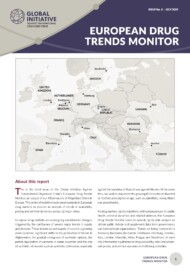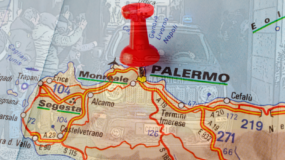Posted on 30 Jul 2025
When Archetyp, one of the largest and oldest dark web drug markets, was dismantled in June 2025, the authorities framed it as a ‘severe blow’ to European organized crime. But as with previous takedowns, although the platform disappeared, its users quickly dispersed and regrouped across rival markets and forums. Open-source intelligence gathered in the aftermath shows how the dark web infrastructure responded and what this reveals about its resilience.
Archetyp functioned as a logistics platform for illicit drug sales. It connected thousands of vendors to customers in Europe and beyond, with drugs advertised as product listings, paid for in cryptocurrency and typically delivered through postal networks. Stealth packaging and vendor reputation sustained the system: drug parcels arrived vacuum-sealed, misdeclared or disguised as everyday items, while customer ratings shaped which vendors thrived. The user experience resembled any other mainstream e-commerce site, only it marketed drugs instead of legal goods.
In the weeks leading up to its takedown, Archetyp had already started to show signs of trouble. Users encountered ‘maintenance’ messages and several alternative access links failed to load. Crucially, there were no explanations or updates from moderators. This silence marked a break from routine and triggered a wave of frantic speculation, with discussions on both the dark web and the clear web debating whether the platform had been infiltrated by law enforcement or if its administrators were staging an exit scam.
On 16 June, any lingering doubt was quickly dispelled when Archetyp’s homepage displayed European law enforcement’s seizure banner – the most recognizable farewell message in the dark web – declaring that the page had been taken offline as part of a law enforcement operation.
Operation Deep Sentinel
For those involved in the online drug trade, the announcement marked the abrupt closure of one of the most active and long-standing supply hubs. With over half a million active users and more than 17 000 listings, Archetyp offered a wide range of drugs, including fentanyl, counterfeit medication and captagon.
Code named Deep Sentinel, the operation was the latest in a series of strikes by European authorities against high-volume dark web markets. Led by Germany’s Federal Criminal Police Office (BKA) with support from the Netherlands and the Czech Republic, the operation extended to Spain, Sweden and Romania. Authorities seized Archetyp’s back-end servers in the Netherlands, froze €7.8 million in assets and arrested eight suspects, including a 30-year-old German national believed to be the platform’s founder.
While few details have emerged about the other arrests, dark web users quickly began to analyze the now-removed official video of the operation released by the BKA. They noted that the footage included references to moderators’ avatars and usernames, leading to a community-wide decoding effort, with users scrambling to figure out who had been arrested, how they had been exposed and how exposed they themselves might be.
An online criminal infrastructure
Archetyp was more than just the next online drug market to fall, having absorbed much of the vendor traffic displaced by earlier market closures. Following the collapse of illegal dark web marketplace Monopoly Market in late 2023, which was widely suspected to have been the result of law enforcement action, the European dark web community entered a brief period of disarray. Vendors migrated to unstable alternatives such as Incognito and Bohemia, but none of these managed to consolidate trust or operational continuity.
It was in this vacuum that Archetyp emerged, eventually becoming a key landing zone for vendors displaced by earlier market collapses. One of its defining features was its structured support for identity continuity. Archetyp encouraged vendors to re-establish their reputations through Pretty Good Privacy (PGP)-signed migration messages – cryptographically signed proofs that linked new accounts to profiles from previous marketplaces. This allowed buyers to verify that they were transacting with the same vendor as before.
When Archetyp went fully offline in June 2025, it triggered the same recovery reflexes seen after past collapses. But this time, however, the process was faster and on a larger scale. Within hours, vendors were resurfacing on forums, scrambling to reconnect with buyers, showing proof of their identities and reassuring business continued as usual. In parallel, many began migrating to alternative markets, initially Abacus and TorZon Market, which became early landing zones.
Vendors and users also coordinated their migration onto other platforms through encrypted messaging tools such as XMPP and Tox, both of which had also become fall-back communication channels following the takedown of illegal marketplace AlphaBay in 2017. At the centre of this process was Dread, a forum that became the first destination for disoriented Archetyp users. But this recovery process was not without turbulence. Within 48 hours of Archetyp being busted, scam relaunches such as ‘Archetyp V2’ appeared, while refund scammers mimicked well-known vendors to exploit the chaos. The influx of previous Archetyp users overwhelmed fragile markets such as Abacus, causing outages and distrust in the platform. Within weeks, Abacus vanished in what many believe to be an exit scam.
However, the same instability that triggered a wave of confusion and mistrust also reinforced operational security discipline. Dread was quickly flooded with posts about digital self-protection, from how to safely shut down accounts to instructions for resetting identities and communication tools. One post, briefly pinned to the front page, captured the urgency: ‘Read this if you only got 5 minutes to burn it all.’
Fighting the Hydra?
Volatility has by now become a routine process used by vendors, users and administrators alike after the fall of each dark web market. What may look like disruption from the outside is, in practice, a recovery playbook now hardwired into the design of online drug markets. Archetyp may be gone, but the features that drove its success are already being carried forward by others.
Platform shutdowns can disrupt logistics, lead to arrests and seize goods, but they do not break apart the dark web’s recovery architecture. And so, the cycle continues – one closure followed by the next platform launch. Just as Archetyp filled the void left by the dismantling of other online drug markets that existed before it, its successor may already be taking shape.
A more strategic enforcement approach would shift efforts to the reassembly toolkit that dark web marketplaces have come to rely on in times of crisis, including communication hubs like Dread, Tox or XMPP, which enable coordination; cross-platform identity tools such as PGP-signed proofs; and shared technical infrastructure that allows markets to be cloned and relaunched with minimal delay.
While enforcement has begun moving upstream – going after technical providers, financial flows and crypto tracing – the system’s adaptability continues to outpace disruption. Until these enablers are addressed, each enforcement success risks becoming just another prelude to the next.



